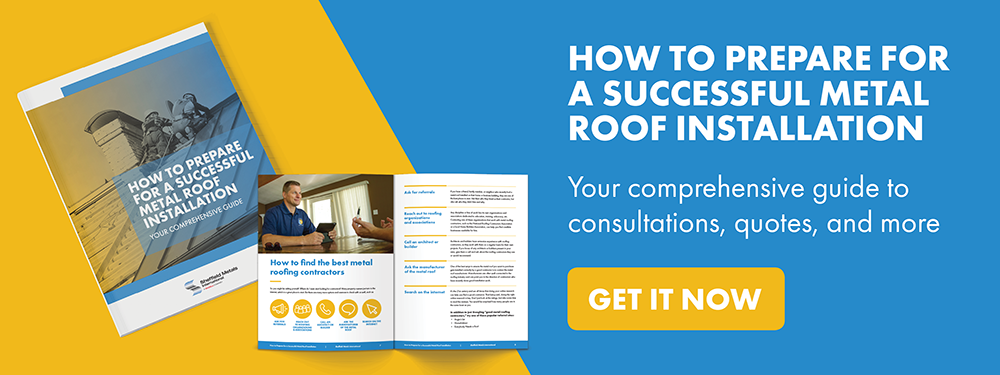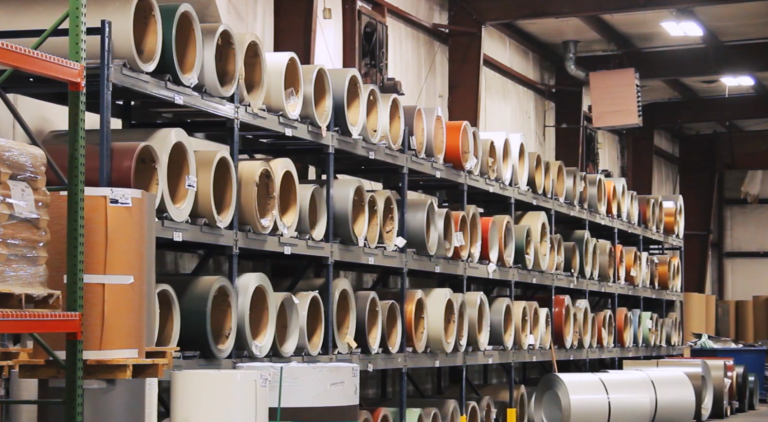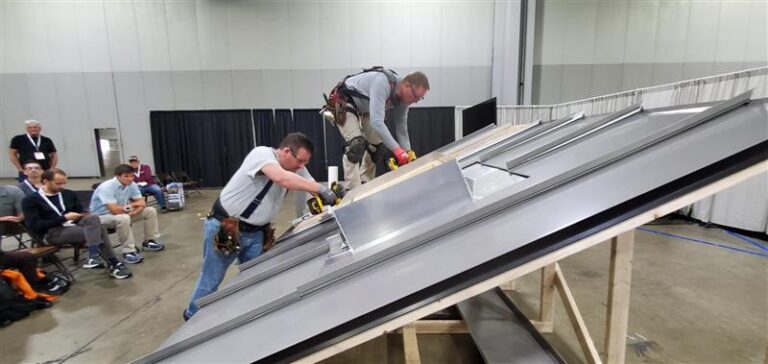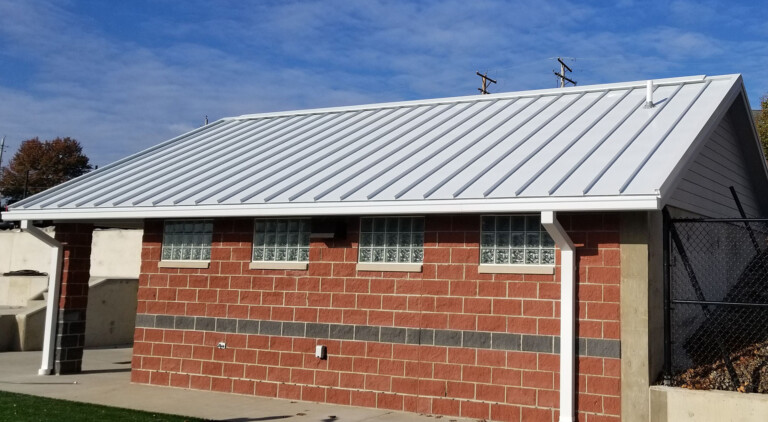How to Best Prepare For Your Metal Roof Installation
Knowing what to expect and how to prepare before, during, and after a metal roofing installation is one of the best ways to ensure the project goes smoothly without any...
Choosing the right metal roofing contractor is just one piece of the installation puzzle.
The next part of the installation of a metal roof — or any kind of roof for that matter — can be just as stressful. This is especially true if it’s your first property or just the first time you’ve ever purchased a roof.
Some of the most common worries we hear about from customers include:
- How should I prepare my property for a metal roof installation?
- Does someone need to be at my home/building at all times during the installation?
- Where will the contractors put their vehicles, equipment, disposal units, etc.?
- How can I prepare my pets, children, or neighbors for the loud noises?
- Who is working on my home or business? Who is my main contact?
- How long will the installation take?
And the list goes on and on.
With over 25 years of experience in the metal roofing industry, Sheffield Metals knows how important it is for your roof installation to go as smoothly as possible. That’s why we want to help ease some of that stress by educating you about what to expect before, during, and after the installation of a metal roof.
What to Expect Before the Metal Roof Installation
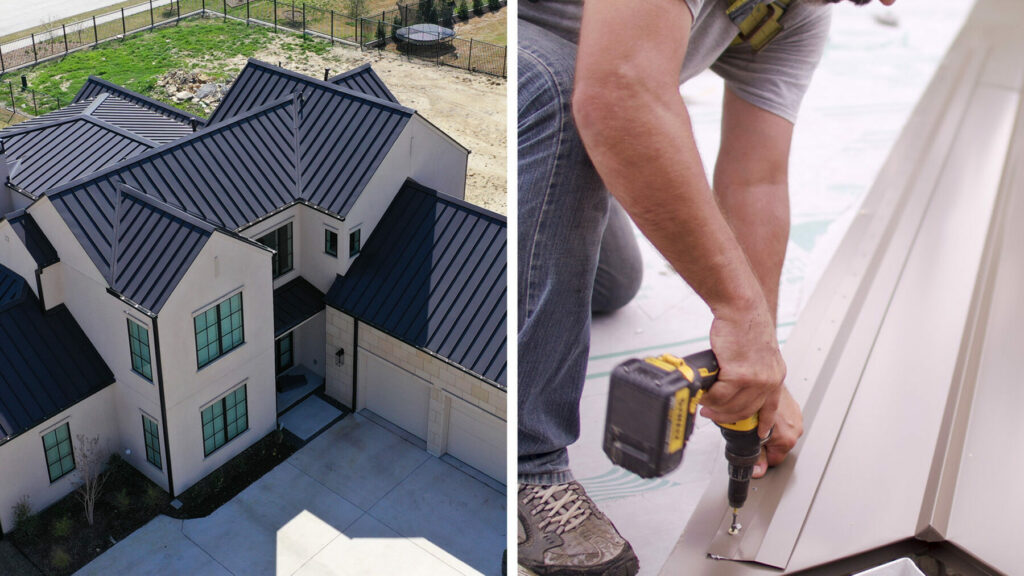
Metal Roofing Consultations
Before any installation occurs, you’ll be going through the process of finding the best metal roofing contractors and ultimately choosing the best metal roofing bid for you. During these consultations with contractors, expect the following:
- A site inspection by the contractor to look at:
- Penetration points
- Flashing zones, low spots, and other potential problem areas
- Differing roof planes
- Gutters
- Roof access
- Surrounding landscape
- All perimeters and “change of plain” areas, such as transitions, valleys, chimneys, etc.
- Note: Be sure to communicate previous issues, there might be residual damage to the roof deck or even the structure
- A field measurement to determine the exact size of your roof.
- Sitting down with the contractor to discuss options for:
- Panel/seam type
- Profiles
- Metal material choices
- Colors and finishes
- Accessories
- Add-ons – Such as skylights, daylighting, solar panels, snow retention systems, etc.
- Warranties and if they are an additional cost
- Maintenance – Preventative maintenance is highly suggested to get the most out of your investment
- A discussion of how payments are handled.
- Financed, paid in cash or credit, covered by an insurance provider, etc.
- Tip: If each contracting business you meet with wants to run your credit for financing, make sure you call your lender ahead of time to tell them you are meeting roofing contractors who will be checking your credit score. They can help make sure your credit isn’t negatively affected.
- Talking through any and all questions you have for the contractor.
- Going through the bid/quote the contractor has drawn up based on the field measurement, site inspection, and product choices.
- Make sure to look out for bids that might be too low or too high.
- Discuss how unforeseen problems, such as bad decking or other items that might not be found until the tear-off of the original roof begins, and how these added costs will be addressed.
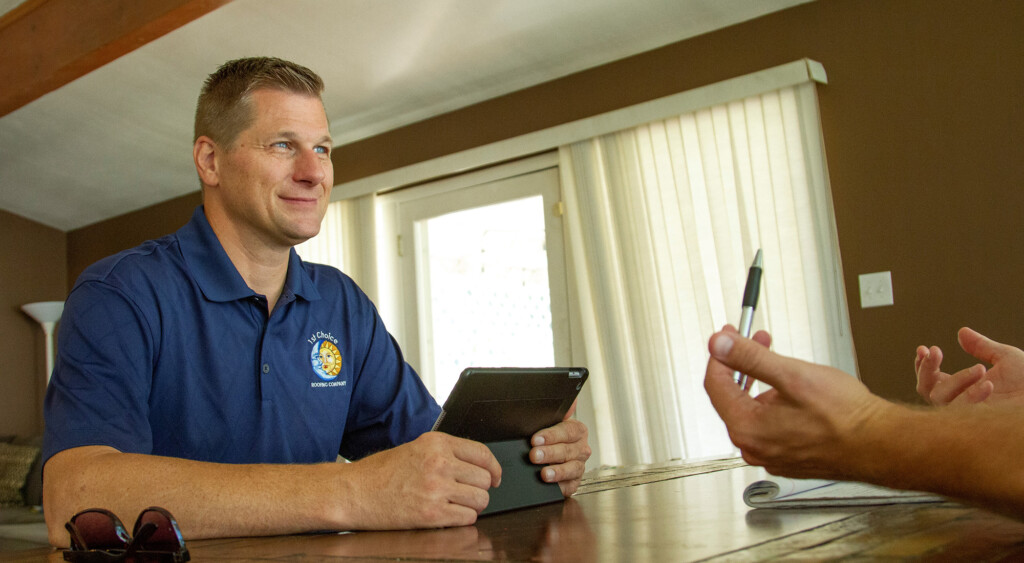
Choosing the Best Roofing Bid or Quote
Once you’ve received the bids, reviewed them, and chosen the one that best fits you, you’ll need to contact the business to let them know you accept their bid. During this conversation, you should be discussing and/or deciding on:
- The date to begin the installation.
- Try to show flexibility if the contractor is busy. This is actually a good thing; the busiest contractors are busy for a reason: They perform good work.
- The upfront payment terms and how it will be collected.
- The best way to communicate with one another going forward.
It will also be helpful to ask the contractor what you should be doing to prepare your house/building, yard, driveway, pool, and other affected parts of a property for the installation, as each contractor’s recommendations will be different. We’ll cover some usual prep work for both contractors and property owners next.

Roofing Contractor Preparation Work
In addition to communicating processes with you before the start date, the contractor is also responsible for:
- Making at least one reminder call to the property owner one week before the scheduled installation date.
- Providing contingency plans in case of poor weather.
- Dropping off any necessary metal or panels, accessories, tools, or equipment.
- Arranging for a dumpster or recycling bin to be delivered to the property, especially if a tear-off of the old roof is included.
- Providing an exterior outlet (if needed).
- Knowing about building access and advising installers of areas not to go, gates and doors to shut, etc.
Home or Building Owner Preparation Work
There are also tasks the property owner should do beforehand to help the fluidity of the installation process. For example, you can:
- Clear any walkways or sidewalks around your property.
- Commercial properties might want to consider setting up blockades so employees, patrons, and customers stay safe.
- Clear any driveways of vehicles, bikes, or other items taking up the contractor’s workspace.
- Ask the contractor to clearly define the workspace and storage area for their tools and equipment.
- Clean up items around the yard, patios, decks, balconies, etc.
- Move any furniture, umbrellas, potted plants, etc., from underneath the roof.
- Move sculptures, birdbaths, wind chimes, or other lawn ornaments that could get damaged or broken.

- Protect the flowers, plants, and other shrubbery located beneath the roof or next to the building.
- The easiest way to accomplish this is to cover the plants with one or more tarps.
- If you don’t have anything to cover them, most contractors can provide tarps for catching debris. Be aware, especially if this is not discussed prior, there might be costs involved.
- Feel free to warn neighbors of potential loud noises they will likely hear during the installation.
- Make arrangements for children who might be disturbed by the noise.
- Make arrangements for pets needing to go outdoors.
- Ask the contractor if there is an entrance/exit that is the safest to go through with your pets.
- It’s best to discuss any pets you have with the contractor beforehand so they are aware of gates or doors that should remain shut during the installation.
- If the roof deck needs to be fixed or replaced, which will open up your home/building to the outdoors, you may want to consider covering or moving the exposed items in the attic, as they will quickly become dusty and dirty.
What to Expect During the Metal Roof Installation
Metal Roof Installation Basics
Needless to say, there will be a lot of activity during the days of the actual installation. As we mentioned before, each contractor’s process will be different, but there are some common expectations you should be able to prepare for, such as:
- There will be many workers in your yard on your roof during the entirety of the installation.
- Expect it to be loud at times and could even cause the house to shake.
- Pets and small children have been known to become irritated with the noises and level of activity outside.
- Items could be falling from the roof at any time, especially if a tear-off is scheduled.
- Your yard/property will become dirty and dusty, which could come indoors through open windows and doors.
- Your yard and surrounding areas may not be cleaned up until the installation is completely finished, which includes any accessories, plastic coverings, or torn-off roof pieces in the yard.
- The dumpster may also not be immediately picked up on the day the installation is completed; it could take up to a week afterward.
Property Expectations During a Metal Roof Installation
Most contractors don’t expect the home or building owner to provide them with anything that isn’t associated with the installation. They often just require that you give them the space they need to complete the installation.
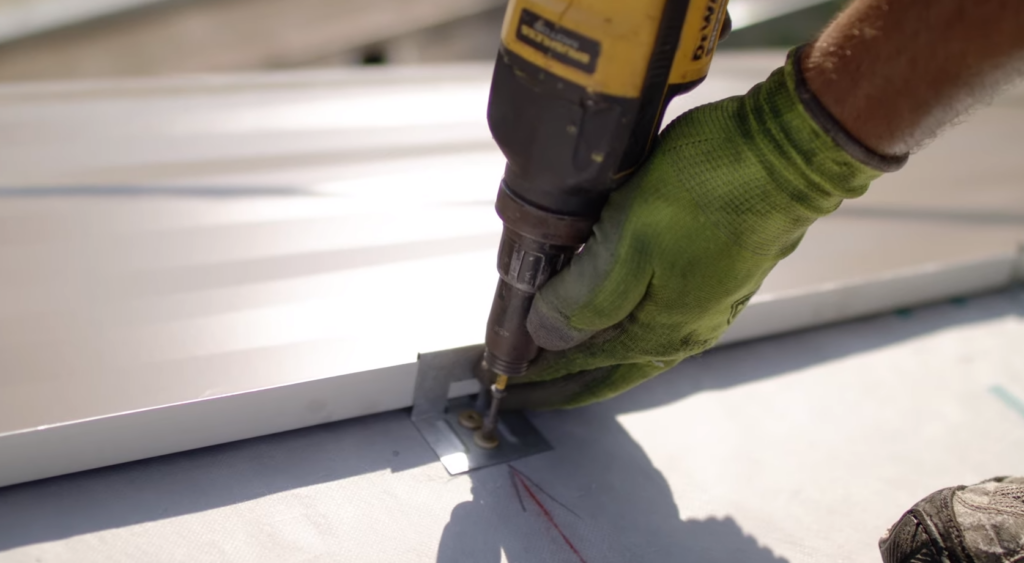
Keep in mind:
- Most contractors don’t require much space to park their transportation, as they usually come as a crew in one or two vehicles. But it’s important to try to create as much space as possible to accommodate rollforming equipment and other tools that may be used.
- While you can offer, contractors typically do not expect to use the restroom inside of your home or business. Many will go to a nearby establishment if needed. Additionally, it is NOT appropriate for any contractor to relieve themselves anywhere on the project site (other than a portable restroom).
- Contractors often bring their own refreshments and food to the job site and do not require or expect anything to be provided to them.
- Some tools and machinery/equipment need electricity to operate, which is something that should be discussed beforehand to make sure you are okay with them using your outlets or other power sources.
- Again, make sure you communicate to the contractor if a gate or door needs to stay shut.
- If a roofing contractor needs access to the inside of the building, there should be a reasonable explanation for it. Additionally, they should take the necessary precautions to maintain a clean environment if they do need to come indoors.
Home or Building Owner Accessibility During Installation
Another way to ensure the installation goes smoothly is to know your involvement in the project. For example, any decisions that affect the price of the metal roof should directly involve the home or building owner. If it’s a topic related to processes or how to install, it might not be something the property owner is involved in.
Here are some other recommendations based on information we’ve heard over the years:
- If you can be at home or in the business during the installation, we would recommend it.
- If it’s not a possibility, discuss how to handle this with the contractor.
- You should only have ONE person as your main contact, which is generally the overseer of the project. Also, there should be one main contact for the contractor.
- If you have a question, get in touch with your contact and not one of the installers or other workers.
- If your contact has a question for you, they will typically just come knock on your door to ask.
- Your contact should also be the person who discusses any unexpected expenses or additions to the original cost of the metal roof with you. Make sure they thoroughly explain the problem, tell you how they will fix it (and tells you before they fix it), and gives you a variety of remedies to choose from.
- Most of all, trust your own decision of hiring this contractor or business to install your metal roof.
- If you went through the process of becoming an educated consumer and hired the best contractor that does great metal roofing work, you should feel comfortable with your buying decision.
- Try to refrain from hovering outside during the entirety of the installation. It’s okay to go outside to look at the progress once in a while, but the installers/contractors don’t need to be watched the entire time.
What to Expect After the Metal Roof Installation
Contractor Clean-Up
After the installation is complete, one of the first things the contractor is expected to do is put the yard and surrounding areas back in order. This includes a number of tasks, such as:
- Walking the yard with a magnet to pick up any nails, rivets, fasteners, or other metal components on the ground.
- Picking up any metal panels, asphalt shingles, or other unused or torn-off materials.
- If they were indoors at any point and made some kind of a mess, they are expected to come back and clean it upon completion.
- Putting back any lawn ornaments, pots, or other items they moved before or during the installation.
- Please note: They likely won’t put back anything you moved before they arrived.
- Scheduling for the dumpster to be picked up.
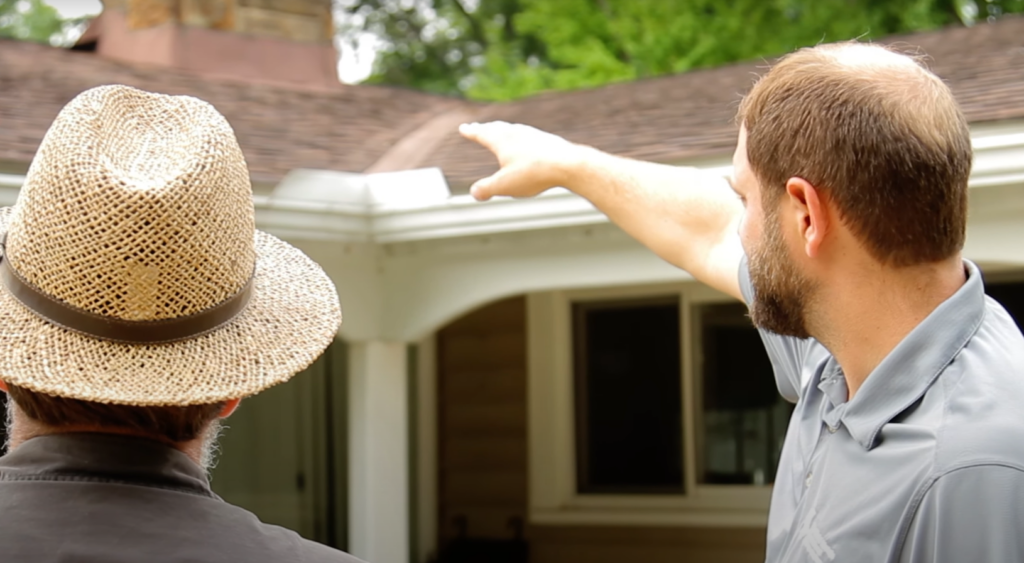
Project Walk-Through With the Contractor
One of the most important parts of the post-installation stage is the project walk-through with the contractor. During this conversation, expect to talk about the installation, how it went, any problems they ran into, and what to expect with your new roof.
Before the walk-through is completed, ask for a 48-hour window to evaluate the roof and make sure it’s done to your liking. During this time, walk around and look at the metal roof, your surroundings, your yard, and anything else the installers worked around. From there, you can develop a list of areas of concern to bring up with the contractor when the 48-hour window is over.
This list might include:
- Spots they need to fix or redo
- Scuffs, scratches, dents, uneven cuts, or anything of the like
- Incomplete or poorly done areas
- Look at flashing zones, drip edge, trim, etc.
- Any items or tools left behind
- Potential problem areas
- Such as oil canning, low spots, incomplete seams, or structural issues
Final Discussions With the Contractor
After everything has been addressed and resolved after the project walk-through, it’s important to discuss a couple of final topics with the contractor, including:
- Final payments – How the remainder of the bill will be invoiced is completely dependent on the contractor, so make sure you discuss how you should be paying for it.
- Warranties – You should already know your warranty options on your new metal roof, but now is the time to ask how to apply for warranties and if any actions are needed on your end to ensure you get the correct documentation. Depending on if your structure is residential or commercial (most weathertight warranties are just available to commercial properties), the warranties you can choose from may vary.
- Keep in mind, warranties may not be available until all invoices are paid. However, it’s common for building owners to negotiate that they will make their last payment after warranties have been issued.
- Most contractors should offer a workmanship warranty for a period of time, usually two to five years, to protect against leaks in the short term after the installation.
- Also, find out what action needs to be taken if a failure occurs and get it in writing (most good contractors have a plan of action).
- After-sale benefits – Some contractors provide maintenance on a metal roof they’ve installed. Make a point to ask if this is offered with your purchase.
- Feedback – Many contractors ask for feedback on both your satisfaction with the job and/or any improvements they could make. Roofing contractors thrive on reviews and testimonials —especially on Google and/or their company’s Facebook pages — from past customers to grow their business. If you do provide feedback, some contractors may even provide incentives or discounts.
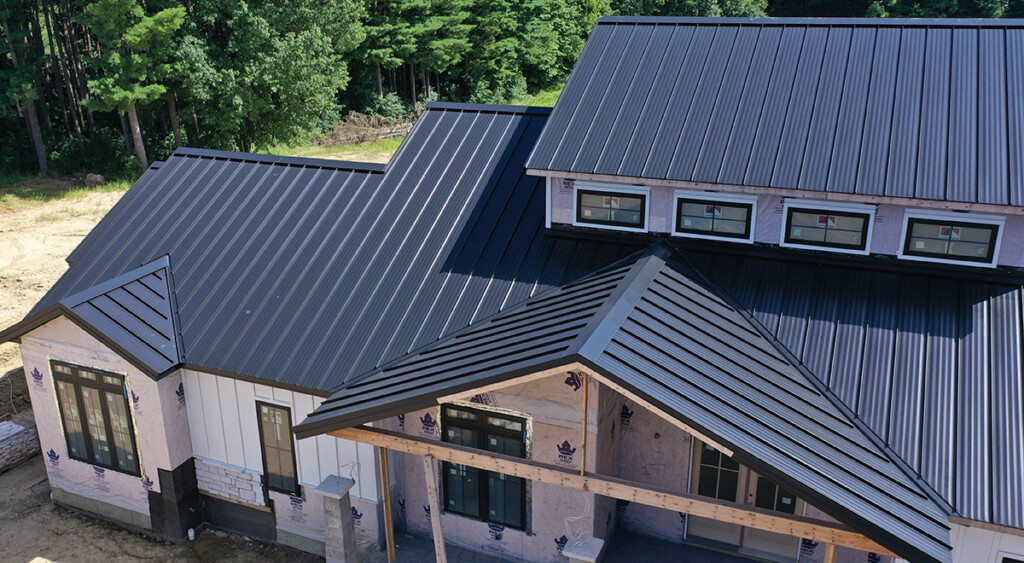
Final Thoughts Preparing For a Metal Roof Installation
When you know what to expect, you can better prepare yourself for your metal roof installation, which is one easy way to alleviate some of the stress that comes with buying a new metal roof.
To recap:
- Before: After choosing the best contractor and bid, prepare your building, yard, neighbors, children, and pets for the installation.
- During: Expect a lot of activity, people, and loud noises during the installation. Try to avoid hovering over workers and only communicate with your main contact about any concerns.
- After: Make sure the work is done to your liking, you know how final payments are collected, and you know how warranties are handled.
At Sheffield Metals, we are here to answer your questions and provide you with peace of mind as you go through the metal roof installation process.
To schedule a call or to speak with one of our helpful metal roofing experts, please contact us today!
